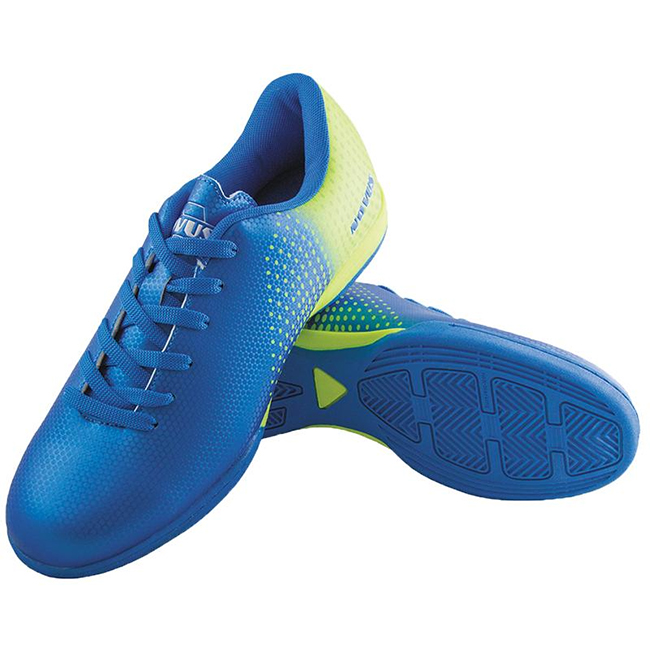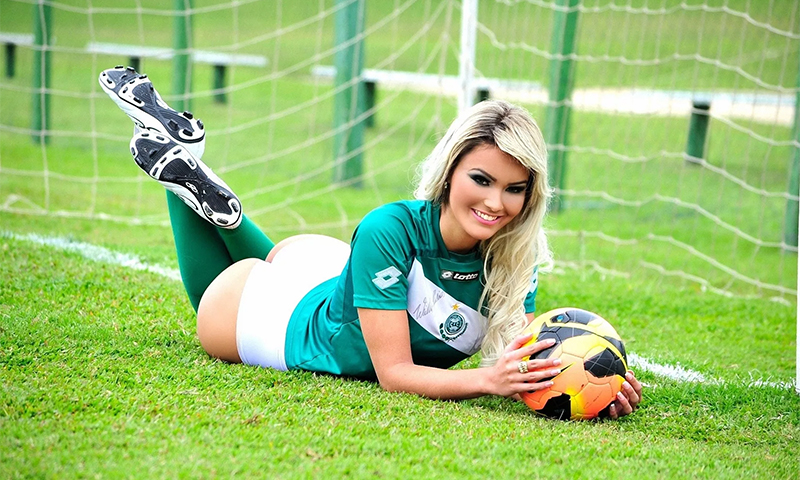Soccer shoes are chosen taking into account the coverage of the field to be played. This is the only way to achieve success in this spectacular sport. In addition, good shoes should sit comfortably on their feet, not interfere with controlling the ball and minimize the risk of injury. We will talk today about how to choose such boots for an adult or a child.

Content:
The best manufacturers of boots - which company to choose
Those who play football for the first year are well aware of whose equipment they should take. In favor of professionals and experienced players, the oldest sports brands are:
- Adidas;
- Nike;
- Puma.
They offer really high-quality boots, and even in this seemingly simple work they find some innovative solutions every year.
However, it is difficult for novice football players to understand the variety of shoes for the field. For them, we have prepared a ranking of the best boots, as well as these instructions for choosing the right pair for games and trainings.
Types of football boots
Firm ground (FG) - for playing on natural grass

Classic football boots - with a dozen fixed conical spikes or flat blades made of polyurethane or fluoroplastic. They are more densely planted in the front (here they are usually 8-9 pieces), which allows the shoe to literally “bite” into the dense ground of a dry field with real grass.
Pros:
- Good tenacity and stability;
- Effective on the tall grass of natural lawn;
- Easy to find on sale.
Minuses:
- Rapid abrasion of spikes and the inability to replace them;
- Increase the load on the feet when playing on hard surfaces.
Hard Ground (HG) - shoes for solid ground

These training shoes look little different from FG-models, except that they have 1-2 more spikes, and their height, on the contrary - less. But even such a slight difference allows you to comfortably play Hard Ground boots on hard surfaces and burnt-out grounds.
Pros:
- More even distribution of spines on the sole, which provides better stability;
- The ability to play on very hard surfaces with worn or synthetic grass.
Minuses:
- All the same non-removable spikes, which are erased even faster.
Soft Ground (SG) - for soft surfaces

Here the number of spikes is the smallest - from 6 to 8, but they are planted on the threads and can be replaced if necessary. This makes SG-boots suitable for playing on soft surfaces, as well as during rain.
For better adhesion to the surface, high spikes (from 12 to 18 mm) are screwed into the sole and are often equipped with metal tips.
Pros:
- Versatility - the ability to pick up spikes for specific conditions of the game;
- Excellent adhesion with soft grass, loose and moist soil;
- Keep speed well;
- Worn spikes can be replaced as needed with new ones.
Minuses:
- On any hard surface, they actually turn into logs;
- In children and adolescents, wearing such shoes can cause flat feet.
Artificial Grass (AG) - for artificial field

These boots were originally designed for playing on synthetic lawns. On their soles are about 2 dozen low round protrusions (up to 1 cm), which can hardly be called spikes. They could be confused with amateur turf, if not for the dense top, designed specifically for playing on the field.
Pros:
- Well distribute weight on the leg;
- Provide stability when entering a hard surface;
- Not bad show themselves both on the artificial and on the natural surface;
- Suitable for children and teenagers.
Minuses:
- While not too common and rarely found in the free market;
- Short spikes wear faster and cannot be replaced.
Turf (TF) - Amateur Boots

Turf models are often called “centipedes” because of the numerous small thorns along the entire sole. They train well on short artificial grass, asphalt, and just drive the ball on the court, which is not suitable for “normal” football.
The spike sole is made of rubber of increased wear resistance, and a foam substrate is placed under the insole to absorb shock.
Pros:
- Perfect grip on hard surfaces;
- Uniform distribution of the load on the foot;
- Suitable for children;
- Cost inexpensive and sold in any store.
Minuses:
- On a synthetic surface, centipedes may behave unpredictably, entangled in the grass - and this is fraught with injuries.
Indoor Cleats or Futsal (FS, IN, IC) - futsal shoes

Football boots (they are also bumps) come with a low fit and a flat sole without spikes. In such convenient to run, play and train on the smooth floor of the gym. In addition, they have a lightweight top with textile inserts and a flexible sole that does not interfere with the control of the ball.
One of the features of futsal is also a horizontal toe with a reinforced top.
Pros:
- Elastic midsole, reducing shock load on the legs;
- Breathable upper inserts for foot ventilation;
- Complicated tread pattern prevents slippage;
- The wearproof sole is durable and does not leave black marks on a floor.
Minuses:
- Not suitable for playing on grass and soil.
Boots selection options

The size
You can not just buy shoes the same size as your casual shoes. During many hours of play or training, your feet will definitely swell, increasing in volume. If you take leather or textile shoes, special problems because of this will not, but with a hard top have to look for shoes with a margin of 1-1.5 size.
Top material
Leather is the ideal material for sewing boots. It is soft, breathes well and allows you to "feel" the ball. However, when buying such shoes, you need to remember that the skin quickly stretches on the leg, so on top of the fitting, the top of the toe part should hug it tightly. This is especially true for light and supple skin kangaroo. But the calf depending on the dressing may be much tougher, and it will cost less than the example.
If you have to play on wet grass or in the rain, it is better to take shoes made of polyurethane leather. This light material has a unique property: it works on the principle of a one-sided membrane, retaining external moisture and not hindering its release from the inside.
Suede (artificial or natural) - has all the advantages of leather, but unlike it does not lose its shape over time and does not stretch so much.
Textiles - lightweight and moderately durable material. For games and workouts on the street, it is not suitable (unless in the summer), but in the hall such a top boots will show itself perfectly.
Synthetic upper reduces the overall weight of the shoe and at the same time has a long service life even under severe loads. However, such shoes are difficult to pick up on the leg, because it does not stretch and does not adjust to the shape of the foot. Without trying to buy shoes from synthetics is undesirable.
Outsole material
1. Polyurethane is a lightweight and sufficiently elastic material to ensure good mobility on the one hand and, on the other hand, to protect it from shock loads while running.
2. Rubber - not the most durable option, but for futsal and completely unacceptable, since such a sole will inevitably leave black stripes on the floor. But she has good shock-absorbing properties and low cost.
Spikes
Studding boots are made from the same materials as the sole. Also in its production uses hard plastic and even metal inserts. But the first thing to look at is the shape of the spike.
Here there are a variety of options, but the most effective were:
1. Bevel - a great choice if you need stability, and you want to avoid injuries and falls on the field.
2. Flat (blade, fin) - well enter the ground and provide the athlete with maximum speed on the field.But if the coating is hard, and the spike does not sink completely into it, damage to the ankle will only be a matter of time.
3. Round - a new kind of thorns, which are ideal for modern artificial lawns. Often have additional holes for better cushioning.
4. Boomerangs are perfect for speeding on the field.
5. Hexagons - do not hamper movements and allow you to apply accurate blows to the ball.
What shoes to choose

1. To simply drive the ball with friends, the usual centipedes with an artificial leather top and rubber soles are enough. But if you want to look like a real football player, even in the courtyard league, you can search the online stores for AG-models.
2. On the green lawn boots of the FG or HG series will show themselves well. This versatile footwear is operated most actively, so it is better to take a high-quality pair with a top made of genuine leather, suede or synthetics, matched to the foot - it will last longer.
3. Goalkeepers and defensive players should use SG boots with metal inserts on the spikes (if the game is not on an artificial field). The rest of the team members should also keep a couple in reserve, preferring polyurethane leather boots. They will help out if you need to enter the field in the rain or play on the soft grass.
4. For children, you should choose centipedes or AG-boots, so as not to interfere with the correct formation of the foot. It would be nice to pick a pair with a sock - this is still a new and non-standard solution for sports shoes, but it will provide a tight fit on the leg, and at the same time protect the ankle from possible injuries.
How much are boots

1. Leather shoes for playing on grass will cost you in the amount of from 1,800 rubles to 14-16 thousand.
2. Boots with artificial leather tops are on average one-third cheaper — their cost varies between 800-12,000 rubles.
3. Footwear for the hall starts from 700 rubles per pair and reaches 4.5 thousand. Amateur centipedes fall into the same price category.
It will be interesting to friends too










